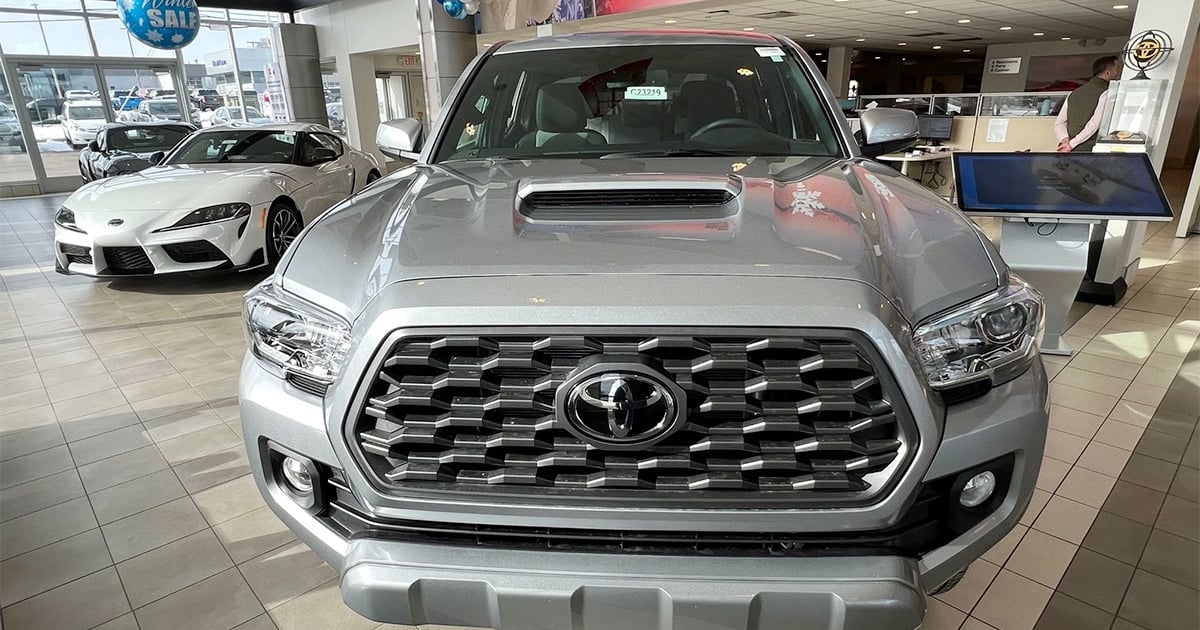
For more than two years, the U.S. auto industry has been an extraordinary case study in Economics 101: The balance between supply and demand.
January illustrated what happens when the market shifts: Supply got better, but the demand that’s driven prices and profits since the microchip shortage began is beginning to soften under economic pressure.
U.S. light-vehicle sales totaled 1.04 million last month, an increase of about 4.5 percent over the severely supply-constrained market of a year earlier, according to LMC Automotive, which said that the showing was still the second-weakest January since 2014.
The reasons: High prices, rising interest rates and low incentives are impacting consumers’ ability to find a vehicle they can afford. Just last week, the Federal Reserve raised the federal funds rate another quarter point in its ongoing battle to combat high inflation — the eighth time it has hiked the rate since March — which is another factor hurting consumers’ car-purchasing power. And U.S. layoffs were at a two-month high in January, largely driven by recession-wary technology companies slashing head count.
January “was more of the same — generally an improvement, but nothing to write home about,” explained Jeff Schuster, automotive group head and executive vice president, GlobalData for LMC Automotive. “Pricing is still high, and consumers are still on the sidelines, either for that reason or for choice availability.”
Motor Intelligence estimated that the seasonally adjusted annualized rate of U.S. light-vehicle sales was 16.21 million in January, up from the 15.3 million rate recorded in January 2022. Total U.S. sales in 2022 were 13.9 million, according to the Automotive News Research & Data Center.
January was something of a mixed bag for the seven automakers that continue to report monthly sales.
On one end of the spectrum, Hyundai- Kia’s volume jumped a collective 15 percent in January; Kia America recorded a 22 percent increase. Meanwhile, American Honda reversed a 17-month losing streak to jump 14 percent, Mazda North American Operations was up 9 percent, and Volvo Car USA rose 8.2 percent. In the middle of the pack, Ford Motor Co. posted a 1.8 percent gain and Subaru of America’s sales rose 0.5 percent.
And then there is Toyota Motor North America, which saw sales fall 17 percent for its eponymous volume brand and 0.9 percent at its luxury Lexus brand — the 12th consecutive sales decline for supply-constrained Lexus.
Other automakers report their sales on a quarterly basis.
David Christ, head of Toyota Division, said the Japanese automaker experienced some weather-related “logistic issues” in delivering vehicles to dealers. He also said that rising consumer costs played a role in January results.
LMC noted that fleet sales jumped 79 percent last month to about 207,000 vehicles compared with a year earlier. Schuster said that while it could be that automakers were finally able to fill outstanding fleet orders, it also may be an indication of weakening retail demand as consumers hold back in the face of higher prices and rising interest rates.
Tyson Jominy, J.D. Power’s vice president for data and analytics, said overall industry inventory is higher, but so are sales, which is allowing dealers and automakers to still keep prices strong and incentives low, adding that he believes the industry set a record for January transaction prices.
“The sales pace is still being determined by production,” Jominy explained, also calling out the sharp rise in fleet sales in the month and noting that in this supply-constrained market, fleet might actually be helping to hold retail prices higher.
“Automakers are not agnostic between the two channels: They can make more money in the fleet market right now because automakers can take the full profits from the sale and not share them with dealers,” Jominy said. While January historically sees a seasonal uptick in fleet sales, he said, “Automakers are getting full pricing from the fleet channel, and those who may get too many vehicles too soon can use the fleet channel to keep retail prices high so you don’t have to return to incentives as quickly.”
Jominy said that “at this point in the inventory build, we should be expecting to see more automaker incentives. We haven’t seen it yet, and we attribute that to the ability to use this fleet channel to keep things balanced.”
Balancing supply and demand remains vital for continued profitability, both for dealers and automakers, LMC’s Schuster said.
“The outlook for autos is at a crossroads, as the rebalancing of supply and demand continues to play out,” Schuster said, adding that 2023 “will be a pivotal year in shaping the recovery going forward and setting the tone where the natural level of demand will settle.”